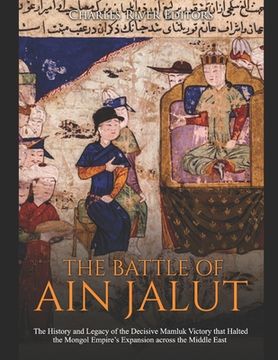The Battle of Ain Jalut: The History and Legacy of the Decisive Mamluk Victory that Halted the Mongol Empire's Expansion across the Middle East
Reseña del libro "The Battle of Ain Jalut: The History and Legacy of the Decisive Mamluk Victory that Halted the Mongol Empire's Expansion across the Middle East"
*Includes pictures*Includes a bibliography for further readingEgypt in the 13th century was a glorious kingdom to behold. Spice merchants from Europe, Asia and Africa sailed up the Nile River to the great port city of Alexandria, carrying riches such as silk, jewels and spices. Cairo, the capital of Egypt, was the greatest city in the Islamic world, with a larger population and more wealth and splendor than any city in Europe. Cairo was a shining pinnacle of cosmopolitan splendor in the medieval world, and besides being a major trading hub, Cairo was famous for its scholars and intellectual class, offering countless academic opportunities for scholars across the Islamic world. The culture of Cairo was dynamic and famous for its wide range of intellectual debates on Islamic sciences and other academic fields, all of which far surpassed any contemporary city at the time. From across the Islamic world, scholars from all the major schools of thought were represented in Cairo. Spirited lectures occurred frequently in public squares and madrasas were often packed with patrons eagerly listening to readings by famed scholars. Cairo was a city filled with art, trade and knowledge. However, there was another factor that made Cairo infamous. The city represented the last bastion of the Muslim world. A great Islamic caliphate, centered in Iraq, had once stretched from the edges of Central Asia to Spain, but invasions by outside enemies had mostly overrun this once mighty empire. The Mongol armies, pouring forth from their grasslands in Asia, had sacked Baghdad in 1258, destroying the caliphate and sending the Islamic world into a state of deep peril. Moreover, the Crusaders had launched multiple invasions into Palestine and the Levant, threatening the very existence of the Muslim world. From the vast grasslands of the Asian steppes arose what is perhaps one of the most unstoppable armies in the history of the world: the Mongol Empire. A loosely aligned horde of tribal pastoral nomads, these warring tribes were united under one banner by Genghis Khan. Under his legendary leadership, the Mongols left their ancestral home in Mongolia on a campaign of conquest. Turning their eyes south toward China, the Mongols eventually conquered the rich empire to establish the Mongol Yuan Dynasty of China, but this did not satisfy the Mongol quest for conquest. The Mongols pushed west into Central Asia, defeating a series of kingdoms and empires and leaving carnage in their wake. These armies of elite horse archers crushed every foe in their path, conquering land all the way to Poland and Austria. The Middle East was not spared their wrath, as the Mongols staged some of their most devastating campaigns in Arab lands. In 1258, the Mongols sacked Baghdad, destroying the capital of the mighty Islamic Abbasid Caliphate, which was a major blow to the Islamic world. The Mongol armies continued west into the holy land of Syria and Palestine. There, the Mongols met the foe to rival them in war: the Mamluks.Hailing from the Eurasian steppes, the Mamluks were not Arab, but ethnically Turkish, enslaved at a young age, and sold into military service in Egypt, where they underwent intense military training in Cairo. Thus, these Turkish warriors were utterly alien from the Arab populations they eventually ruled over in ethnicity, language, and culture, but they were remarkably skilled in the mounted warfare styles of the nomadic tribes of the Eurasian grasslands and other aspects of medieval warfare. As a result, the Mamluks were some of the finest professional soldiers of their time, which they proved on multiple occasions through their brilliant military campaigns against the numerous enemies of Egypt.

